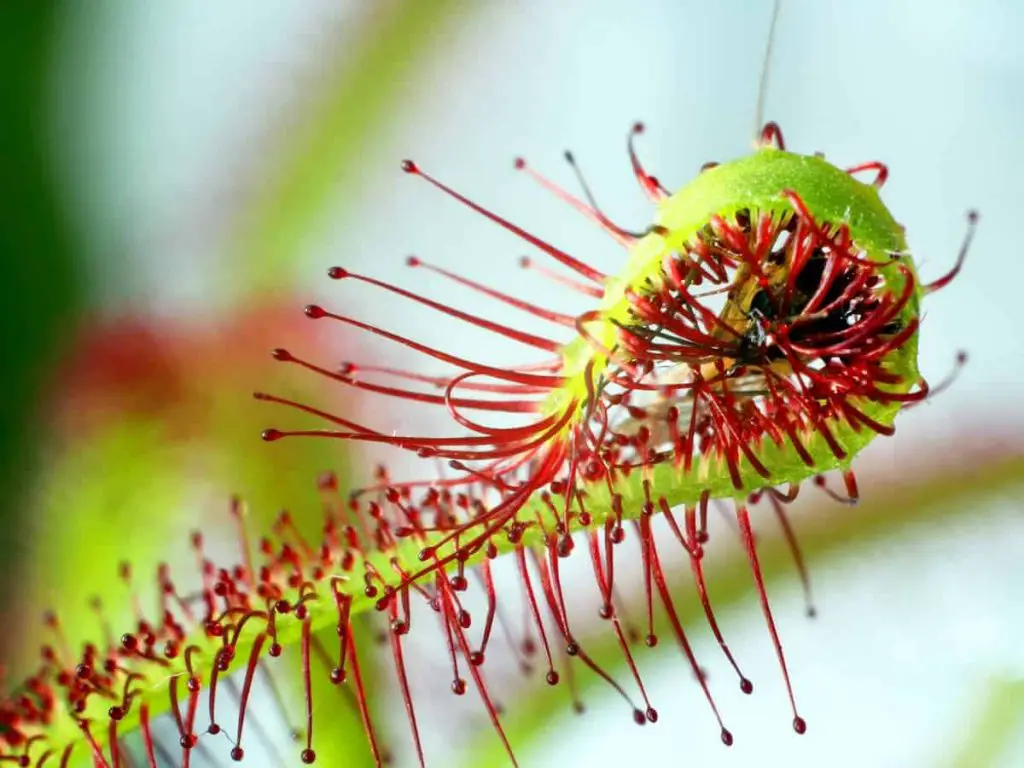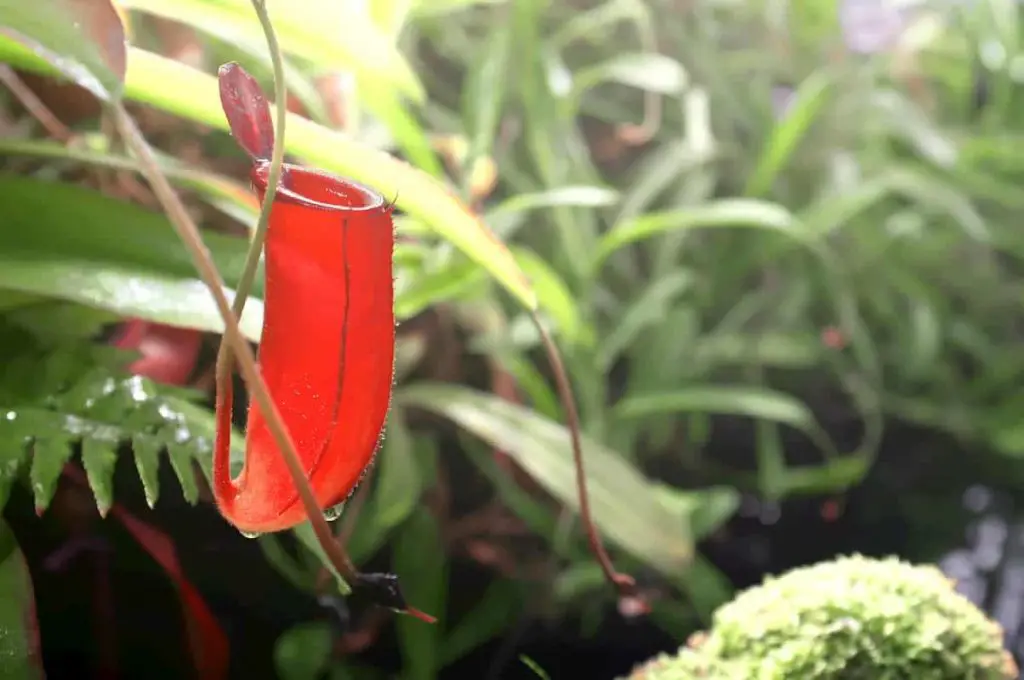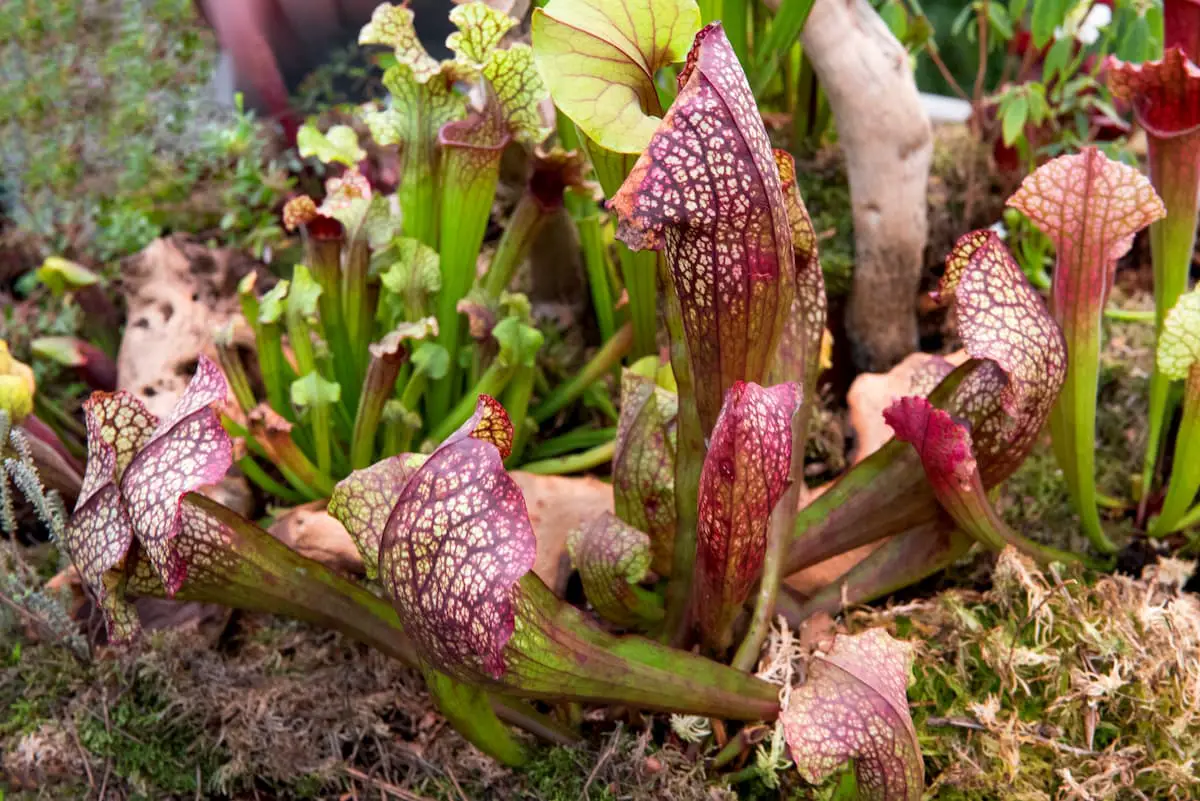New plant owners may be confused with the different terms tossed around by people within the community. This is one such term, Insectivorous, like carnivorous, is just a term meant to split plants into a container that is more specific.
What Are Insectivorous Plants? Plant species which are specialized in trapping and consuming insects and other smaller creatures are known as insectivorous plants. These plants develop bright colored leaf modifications of different shapes for luring, trapping, and digesting tiny creatures.
We will dig into the most common plants of this type below and help you grow your knowledge of the topic. It is always good to take a few minutes when there is new terminology and get a ground-level understanding of what it stands for so you can ask the right questions.
Where Are Insectivorous Plants Typically Found?
Insectivorous plants are of common occurrence in marshy and also in extreme desert conditions where soils are deficient nutritionally. The protein-rich diet of insectivorous plants helps them to grow fast under very poor soil conditions.
These types of plants are typically found in the more acidic marshy environments where nutrients are rare or scarce and the environment, in general, is hostile to most plant life.
Typical Insectivorous Plants
There are many varieties of insectivorous plants, also known as carnivorous plants, in the world. Though they do break down into around five different standard traps.
Venus Flytrap
The leaves are hinged along the center and have long spikes at the edges which interlock when the leaf folds over. There are ‘trigger’ hairs protruding from the leaf which when triggered by an insect – fold the leaf over – trapping its prey.
The plant exudes digestive juices, and once the prey is absorbed the leaf ‘re-sets’ – ready for the next insect.
The Sundew Plant
Its leaves are covered in hairs that are topped with sticky fluid. Any insect touching the hairs is instantly trapped – and the leaf folds over to engulf the ‘victim’.
The sundew attracts insects to specialized leaves that produce sweetness on hairs on the thickened surface of leaves at the base of the plant. The sweet substance is also sticky, and coats “hairs” that grow from there struggles to trigger the leaf to close, and spikes along the edges of the leaves that mesh when it closes to form an additional trapping mechanism.

Once closed the leaf holds the insect until it dies, after which decomposition occurs and the leaf absorbs the insect’s nutrients through the surfaces of the leaf. As in the example above, this feeding mechanism only provides a supplemental amount of food.
The Pitcher Plant
It forms its leaves into long tubes that fill with rainwater. The leaves are super smooth meaning any insect simply falls into the liquid and drowns and the nutrients are absorbed.
A pitcher plant collects the insects in its central leaf that is curled into a structure that resembles a pitcher for drinks, hence the name. The insects are attracted by the sweet exudate that coats the edge and inner surface of the “pitcher.”

Once on the inner surface of the pitcher, insects find that they cannot climb out because of small “hairs” that point inward. Eventually, the insect falls into a pit of liquid in the bottom of the pitcher, in which it drowns and decomposes.
The nutrients from its body become “food” to supplement the plant’s photosynthesis, and what it obtains from its marshy root location.
Butterworts
Butterworts are small plants that produce rosettes of flat leaves, often with upturned margins. The leaf’s surface is covered in small, sticky hairs that are able to catch small prey like gnats, fruit flies and more.
They have glands that secrete a liquid of enzymes and acids that rapidly overcomes and dissolves the prey. This bug protein digested mineral-rich mixture is then absorbed by the plant for food.
Butterworts that live in cold climates will hibernate as small buds over the harshest times. Warmer weather species from Mexico turn into a non-carnivorous version more like a succulent plant during the subtropical winter and its dry season.
Butterworts are famous for their beautiful, often long-lasting flowers.
Waterwheel Plant
The waterwheel plant is very closely related to the Venus flytrap. As it is basically just a smaller, water-based version of its famous cousin. They are entirely water-bound and float freely, without roots just below the surface of the water.
Whorls of the tiny snap-traps string together to form little plants 3-4″ long. These traps snap shut on all kinds of creatures, but they are prone to catching mosquito larvae.
Final Thoughts
As you can see there are a great many options for you to learn more about when looking at insectivorous plants, they can be great fun to grown and cultivated. Taking the time to build the foundation of the soil can help make them thrive for years to come.
These plants can make awesome gardens when you contain them inside a terrarium inside your house or apartment. I would love to hear from you in the comments below if you raise carnivorous plants and what you view as the best and worst parts of managing these plants long term.




Leave a Reply